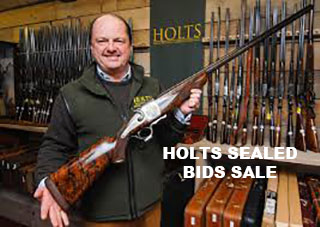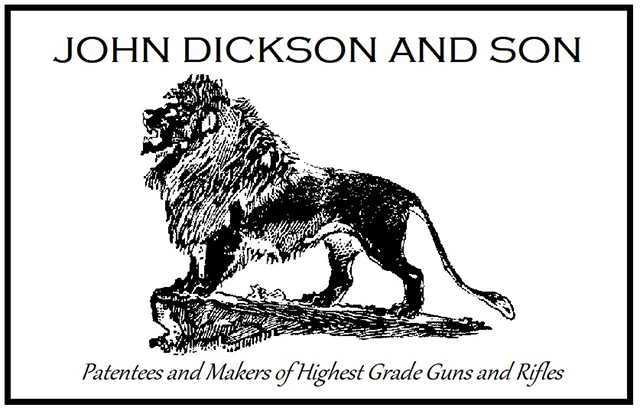Today, lot of vintage British guns are, frankly, worn-out.
It is quite remarkable that any piece of mechanical sporting equipment made between 50 and 150 years ago is still viable at all. The fact that there are plenty of options in this category is all the more so.
Nevertheless, half an hour spent on-line, looking over the inventories of a few British gun dealers, or skimming through a couple of auction catalogues shows clearly that, be your budget £1,000 or £50,000, the market offers plenty of choice.
With the proposed lead shot ban likely to stimulate sales, rather than purchases, among British shooters, bucking the trend could be astute, given the likely price drops.
The most important lesson is: do not buy to speculate. Buy what you like and enjoy owning it. Understand that you will need to use non-lead shot in it very soon and start getting used to the idea that it will be different (worse) and cost more.

There are now five alternatives to lead shot available to UK shooters; (bismuth, BioAmmo Blue, steel, ‘Hortonium’ and TSS). Not all are easily found, all are more expensive than lead and some are unsuitable for use in classic English guns with normal game chokes.
If you plan to buy a British side-by-side, first decide what ammunition you plan to use in it. My recommendation is to use bismuth. That way, you do not need to make any adjustments to your chokes or chambers. Bismuth is 15% less dense than lead but it is denser than all the alternatives, and, therefore, better.
There was a fashion a couple of decades ago for very light game guns, then they went out of favour and heavy pigeon guns were all the rage. With the advent of lead alternatives, consider the best gun for each of them.
If you want to use steel shot, it may be wise to seek a gun with 2 3/4” chambers and a bit more weight than average: perhaps 7lbs or a bit over. That will give you more options with regard to ammunition, as 70mm cases will be fine to use.
If you plan to use bismuth, no need to worry. However, if you plan to use steel, chokes in older guns should be no more than Quarter Choke. For new guns, the Half Choke guidance is fine but older guns may have thinner, and more variable, wall thickness and are in need of a bit more care.

Remember the old 3” chamber used in 19th century proof tests is not the same as a modern 3” magnum test, so restrict yourself to 70mm cased ammunition, even in old 3” chambered guns (which are almost always wildfowl or live-pigeon guns).
Many Victorian guns were made with bores somewhat at variance with normal 12-bore dimensions (.729”). It is perfectly normal to find 12-bores with barrels measuring .710”, .719, .740”, or wider. Insufficient data exists on this but I would not advocate putting steel shot through very tight bores (or very wide ones for that matter).
Replacing the woodwork on a side-lock or hammer gun these days will cost at least £6,000. A boxlock would be a little less. It is usually not economically viable to re-stock a gun you have just bought so pay attention to the wood.
First, look at the overall appearance. Is is very dark and worn looking, with chequer and drop-points rubbed smooth? Is the wood lower than the metal parts it meets around action, lock-plates and forend iron? If so, reject it and look elsewhere.

How well does it fit you? If very short,(under 14” of wood without a pad, plate or extension) it will be harder to sell and should be up for some price negotiation. People pay a premium for pretty figure, so a plain stock is also a bargaining chip.
Check very carefully for cracked and repaired wrists (re-chequering is often done to disguise this).
In general, favour original stocks with little evidence of wear, re-chequering or re-finishing. You can do some re-finishing, if necessary, but it is best to be the first to do it.
There are enough good guns, and prices are low enough now, to avoid worn-out and heavily over-restored guns. If it looks worn out, it probably is. If it looks ‘tarted-up’, it probably is. Trust your first impressions. Pay a little more for something at the top of your price point rather than skimp, or aim for a higher quality mark and compromise on condition.
In an ideal world, buy the gun with the most original finish you can find. Once you have it, don’t be afraid to use it. Even one-hundred and fifty year old guns are more than capable of out-lasting you or me, if used with gusto, cleaned and properly stored.

Here are my tips for good buys on the secondhand market today:
£40,000-£50,000
At £50,000 you can buy best quality, mint London guns in the most expensive gun shops, rather than shopping around for a ‘deal’. Anything you see in this bracket should be almost fully case-colour hardened and original, with perfect barrels and no messy alterations. That may mean ‘sleepers’ from the 1930s or even best side-locks from the 1990s. A lot of advertised guns at this price have been on the shelf for a while, so drive a hard bargain if you are serious and have cash to spend.
£25,000-£35,000
At this price you can shop for the cream of the London side-locks by Boss, Purdey or Holland & Holland, from the best periods for fully developed, classic side-locks (1920-1940) or opt for something more modern. This bracket may get you the best value of all, as you are essentially buying a gun in very little used condition, of the very best quality, no different really to what you would have to pay £150,000 to buy new.
£20,000
This price bracket can be tricky, as there is a lot of stuff advertised over-ambitiously. It can be hard for the layman to tell the difference between a £10,000 gun and a £20,000 gun merely by looking at it. You should still be aiming for best quality and original, rather than comprehensively restored but the gun maybe a bit older or newer (the 1970s and ‘80s are not especially appreciated). Holland & Holland ‘Royals’ and Purdey self-openers are still on the menu.
£10,000
A really good, second model, Holland & Holland ‘Royal’. You won’t get the self-opener but these are among the classiest, best handling and prettiest London side-locks ever made. I think they look nicer than the later model. They have the very simple and reliable Holland/Southgate ejector and a bullet-proof, simple, best quality, side-lock action that has proved itself beyond doubt. At this price you will get a superb example, that should be cased. Alternatively, a best quality, best condition side-lock ejector by any other, less in-demand maker.

£5,000
A second quality gun from a top maker would be my tip. At this price you should be able to get one in almost unused condition. I recently sold a Joseph Lang 12-bore SLE, cased, made in 1913 for just under this price. It was a classic English game gun with 28” barrels and had been moth-balled since WW1.Similar guns are available and represent fantastic value. If a best gun is what you must have, then older, restored London bests are available but when the price comes down, you have to compromise on condition and originality.
If a boxlock is of interest, £5,000 will buy you a beautiful, best quality, 12-bore by any of the best-known makers in almost ‘as new’ condition. Don’t be hung up on posh London names; many of the finest boxlocks were sold by less revered firms yet are fantastic quality.

£1,000
Here I will step out of my comfort zone and advise you to look at something Spanish. The AYA No.2 is a copy of the Holland & Holland ‘Royal’. Over the years it has proven a reliable and pleasant gun to shoot and own. You will need to replace the strikers and the hand-detachable lock pin will un-wind itself and fall off, if you are not careful, but these issues can be remedied relatively cheaply.
Even better value is the Webley & Scott Model 700. It is a boxlock with Southgate type ejectors and 2 3/4” chambers (in late 1950s and later models). These were made in large numbers and really good ones turn up regularly for well under £1,000. I still have the one my father was given for his seventeenth birthday.
So, get looking at those auction catalogues and searching through the websites of used gun sales to see what you can find. Side-by sides are under-appreciated here in Britain, while our American cousins love, revere and buy them.

Financial advice at its most basic is ‘buy low, sell high’. Well, prices have never been better for the buyer of side-by-sides in my lifetime.
Published by Vintage Guns Ltd on (modified )




